Birding Sites Editor Christian Perez writes about an easy to visit birding place near Metro Manila that has a lot of waders including Chinese Egrets.
space
BIRDING THE NAVOTAS MUDFLATS
by Christian Perez
Birding Sites Editor
“Chinese Egrets in Navotas!” I have heard that many times from old time birders, but nobody seemed interested in going there to check them, and I have seen very few reports from the site, actually none since 2008 in our e-group. So in the morning of 10 January, Ruben Bala, Peter Bijlmakers and I drove to Navotas with some very basic directions from a text by Arne Jensen to check out the site.
The Site
Navotas is an elongated city along the coast of Manila Bay, and surprisingly the north end of the City is a long peninsula of fish ponds and mudflats devoid of any house and inhabitant. Beyond Barangay Tanza, it is hard to believe that you are in Metro Manila. Facing the Bay is a 2.5-kilometer beach with not a soul on it. The beach is made of grey sand mostly covered with garbage, while in the water soft mud slopes very gently into the sea. This makes it difficult for people to walk in the water and for any kind of boat to land on the beach. You can walk to the end of the beach but we were advised not to walk on the mud as it can be meter-deep. Better stay on the sand (and the garbage). We were there at mid-tide. It seems that the tide is not a big factor in terms of sighting birds. The beach and the mudflats are extensive, and there seems to be space for the birds at all times. Most reports from the site are made in January on the occasion of the annual Asian Waterbird Census. However, according to Arne Jensen, the numbers are much higher in October and in April when the birds stop over on their way further south and back.
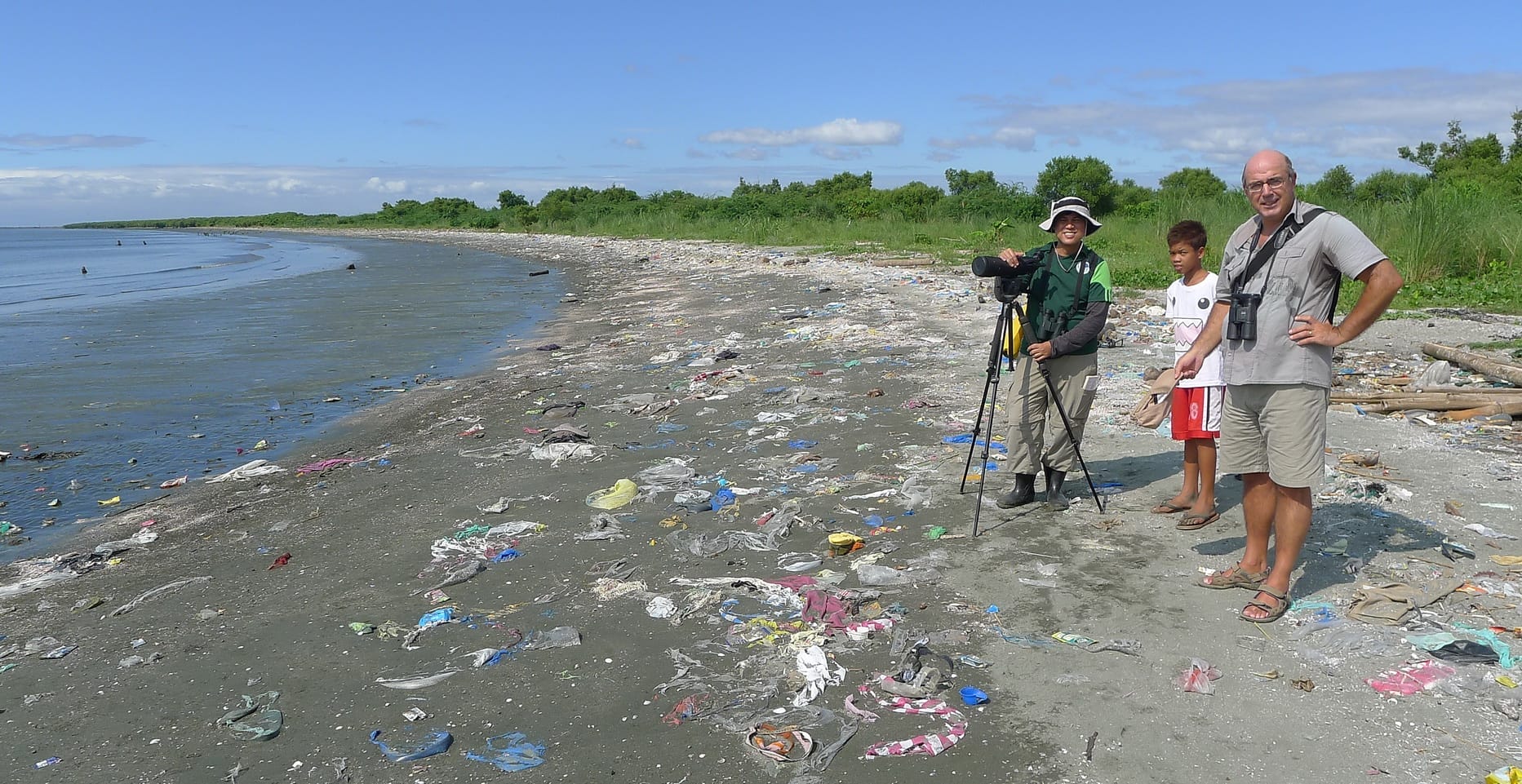
The Birds
Navotas is home to many waterbirds during the season, often numbering into the thousands. The main attraction is the Chinese Egret, which never fails to show up on the mudflats along the beach. DENR counted 18 Chinese Egret during the latest AWC count on 26 January 2013. The numbers were much larger in some earlier reports, for example 48 in 2008 and 94 in 2007, although it is not clear whether it is a decline or a fluctuation. They are often mixed with Little Egret, which makes them tricky to identify. Side by side they are easier to separate as the Chinese Egret is noticeably larger than the Little, but in isolation you will need to have a good view of the bill and the lores, and even then it can be quite tricky. From my observation both species behave in identical manner when chasing fish in shallow water, so I find it hard to separate them on behaviour. DENR counted 15 Little Egret during the last AWC count and likewise there were fewer Little than Chinese Egret in most past counts. The Great Egret can of course be easily spotted (33 during the latest AWC). Occasional Intermediate Egret and Little Heron have also been reported.
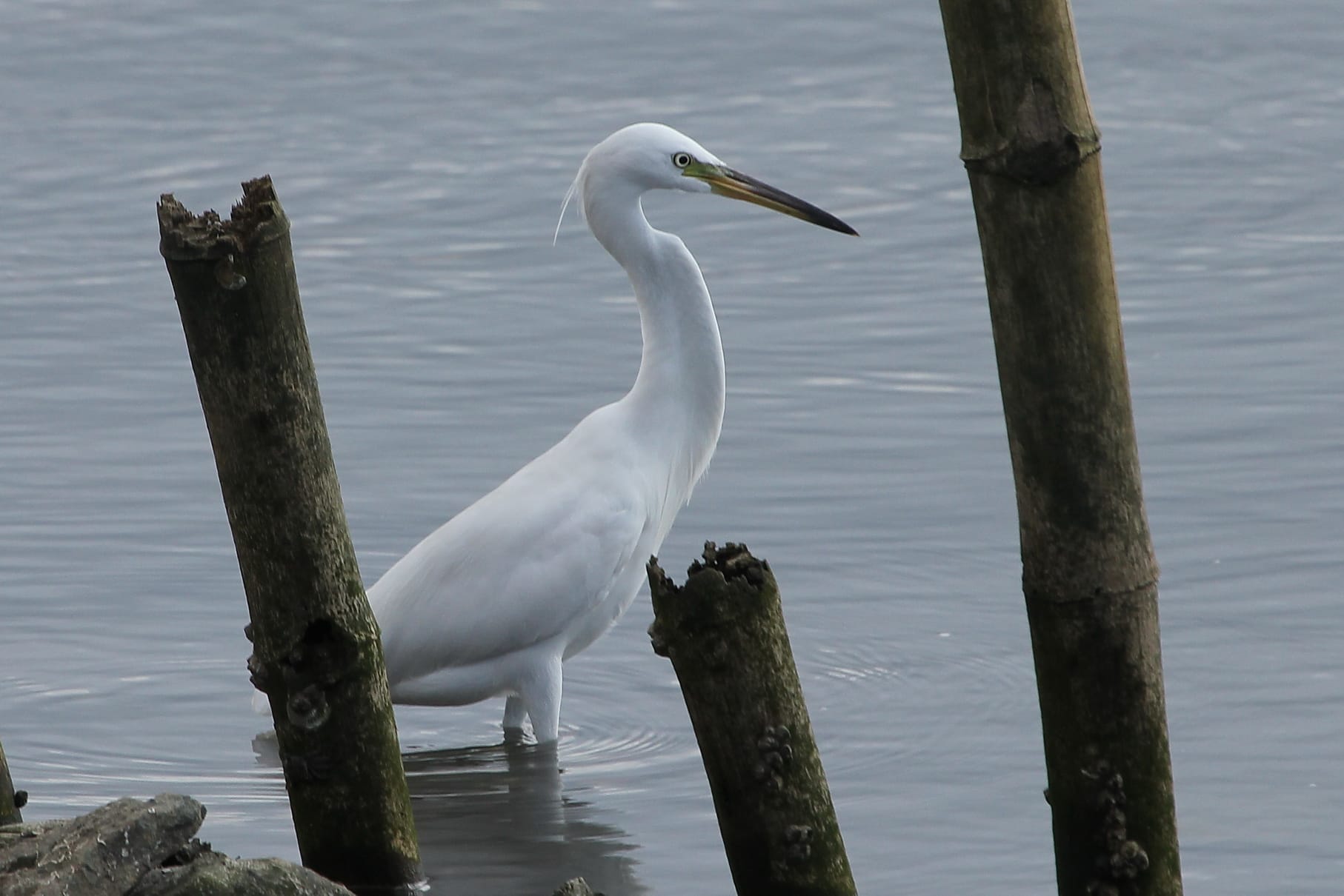
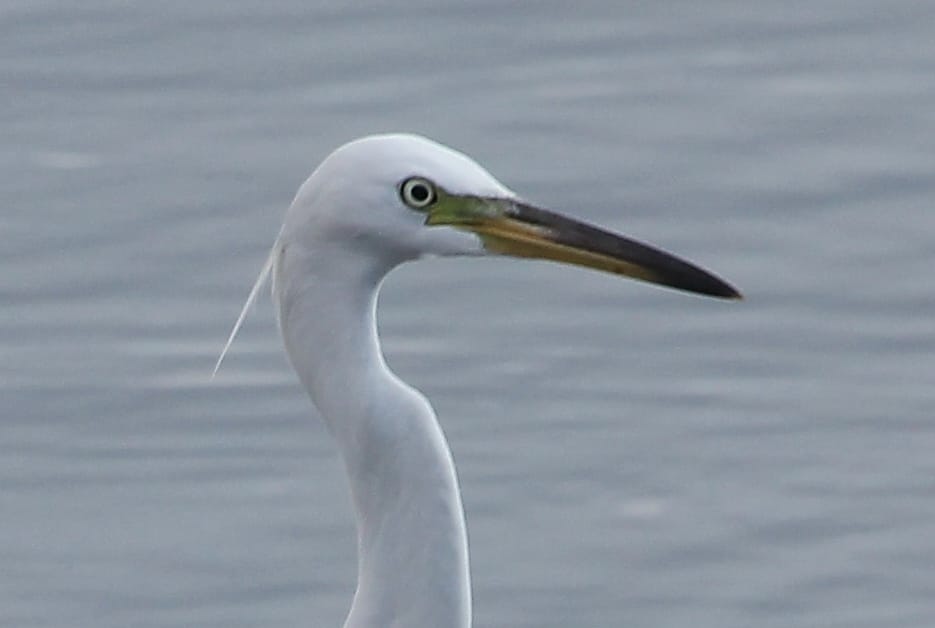

Waders reported over the years in Navotas include Asian Golden Plover (sometimes in their 100s), Grey Plover, Kentish Plover (450 in the last count, but often seen in their 1000s), Bar-tailed Godwit, Common Redshank (40 in the last count), Common Greenshank (54 in the last count), Greater Sand-Plover, Wood Sandpiper, Common Sandpiper, Terek Sandpiper, Marsh Sandpiper, Grey-tailed Tattler, Red Knot, Rufous-necked Stint, Long-toed Stint, Sharp-tailed Sandpiper and Curlew Sandpiper.

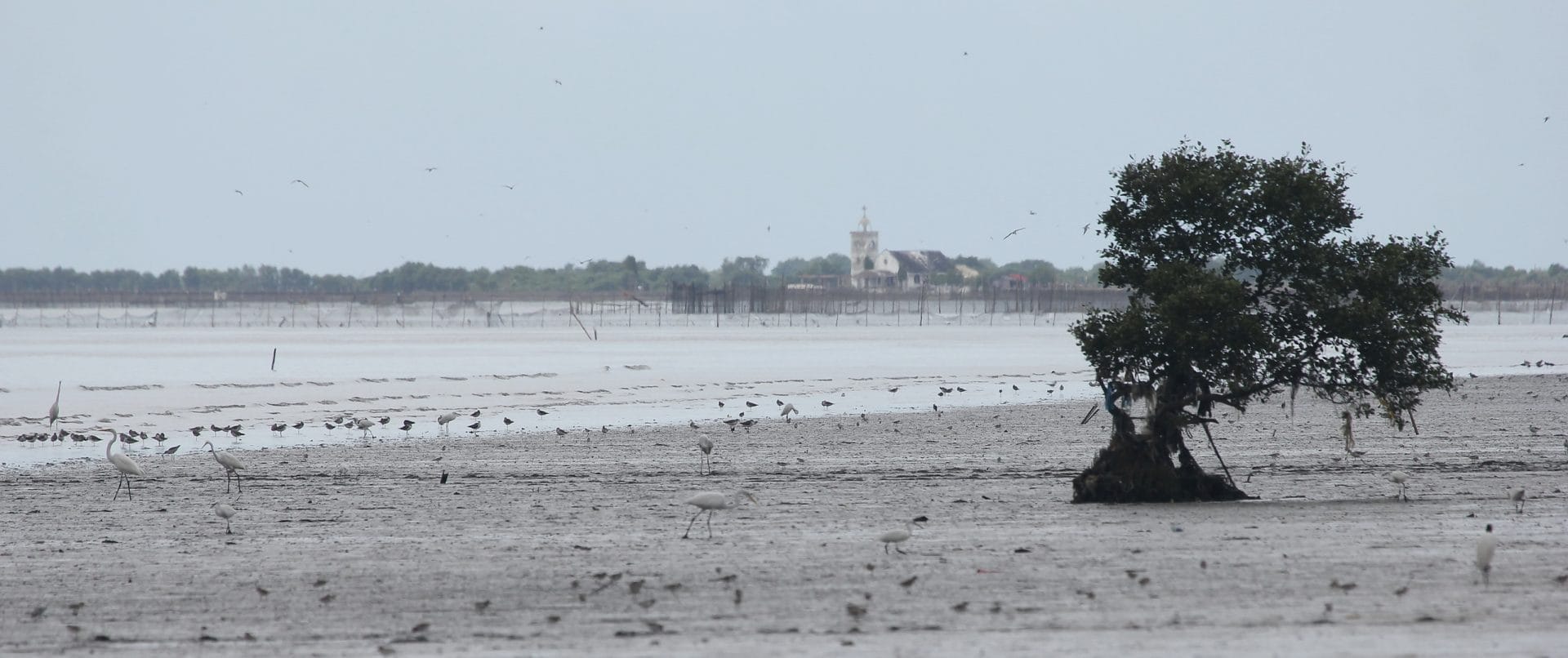
A few Black-headed Gull can sometimes be spotted flying along the beach or floating on the water (one on January 10, up to 86 in the 2008 AWC). As expected Whiskered Tern fly around in large numbers (about 1100 in the last count, sometimes many more). Gull-billed Tern have also been reported.
Directions
First you have to reach the Tanza Elementary School in Navotas, which is at the north end of E. Rodriguez Street in Banrangay Tanza, Navotas. To get there from Roxas Boulevard, go straight to Radial Road 10, then the C4, then turn left in Manapat Street in Malabon, after the large curve to the right. Coming from EDSA, continue beyond Monumento to the C4 and turn right in Manapat Street. You will reach Malabon Church. Take Juan Luna on the right side of the Church, then after some distance, turn left in the oddly named Women’s Club Street. After the bridge you are in Barangay Tanza, Navotas. At the end of the street, turn right in E. Rodriguez Street. The Tanza Elementary School is right at the north end of E. Rodriguez. Bring a city map with you as it is easy to get lost.
At the school gate turn left to go around the school. Park behind the school and walk from there to the long bamboo bridge that leads to Sitio Pulo. You will see the bridge on the other side of fish ponds from the back of the school, but better ask directions on the shortest way to get there. Take the bamboo bridge all the way to Sitio Pulo, walk through the Sitio, and you will be on the beach facing Manila Bay.

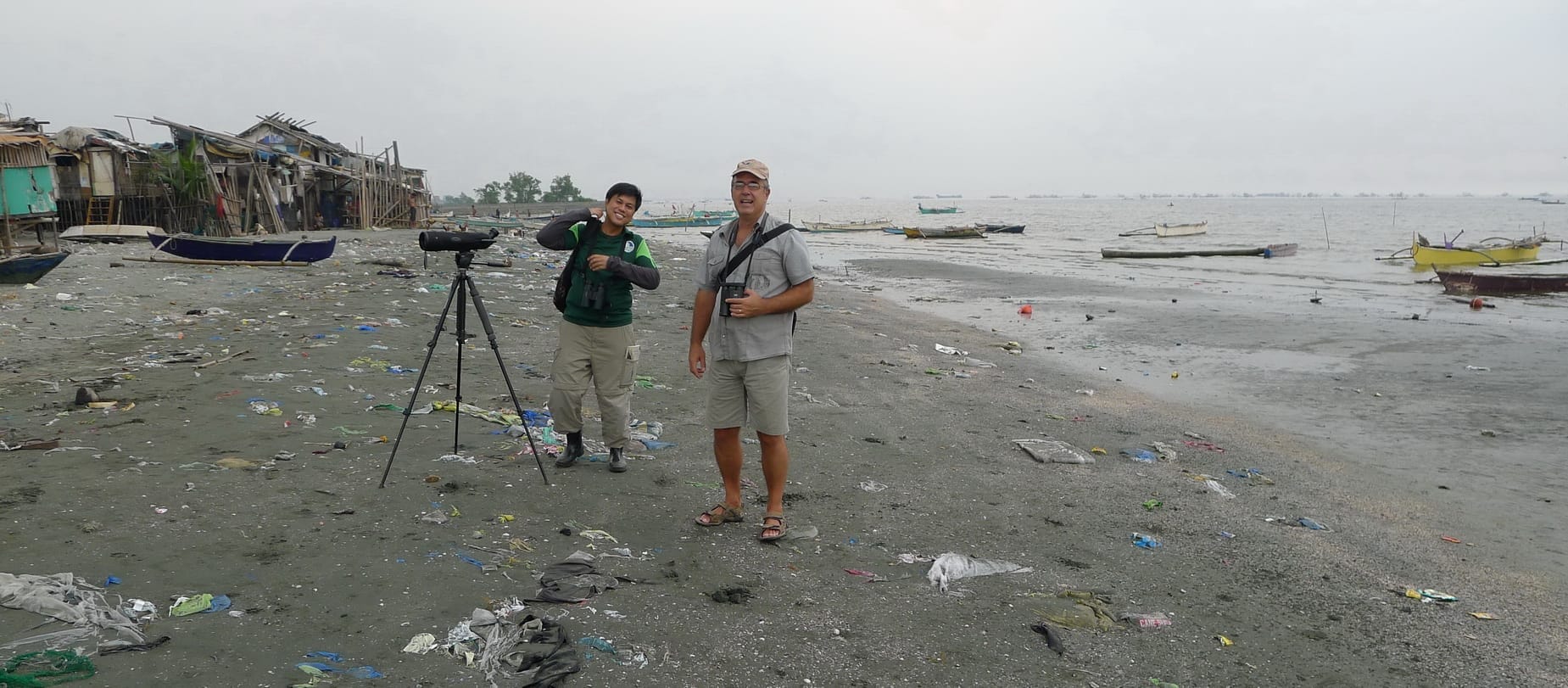
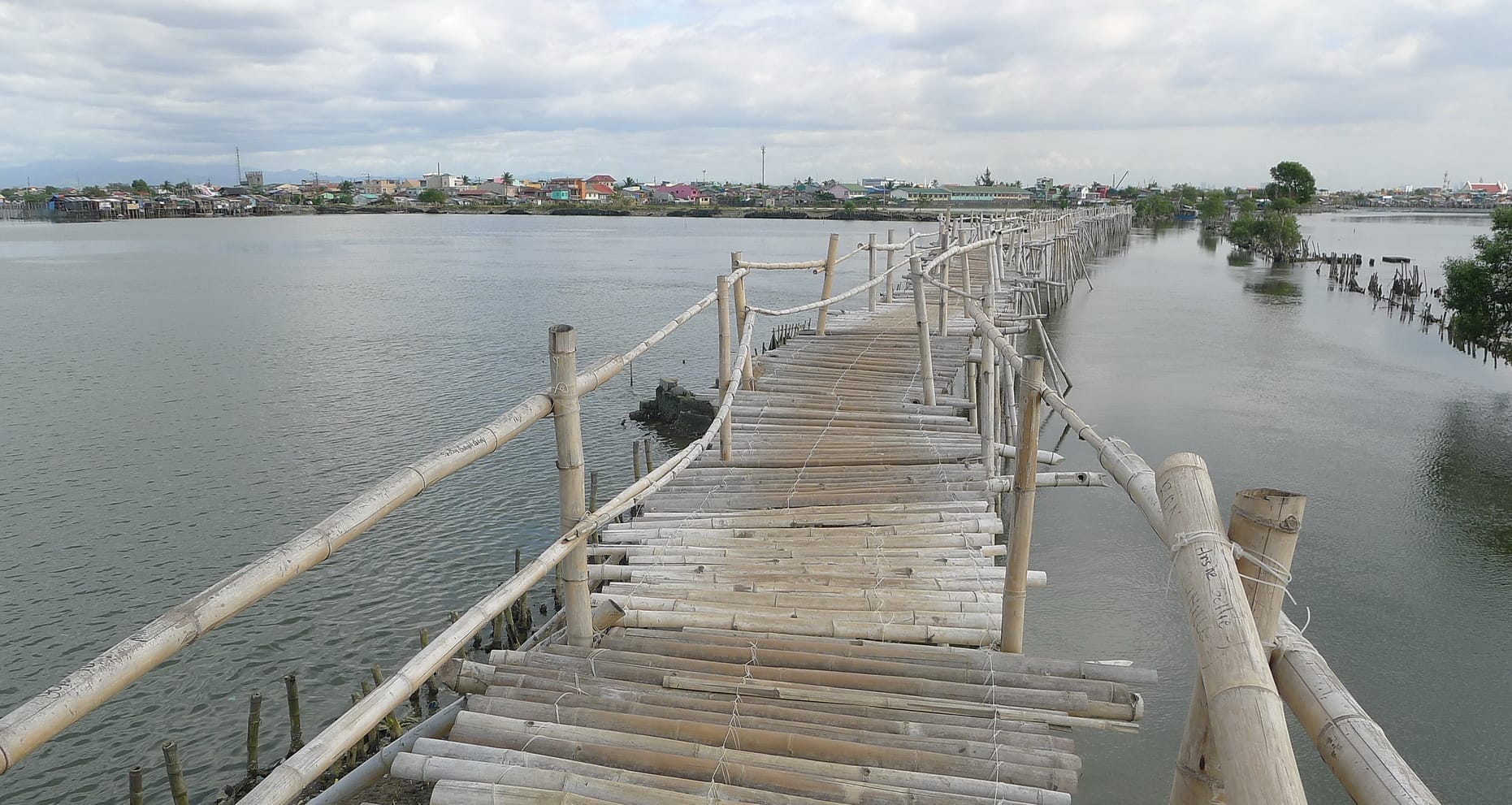
The Navotas mudflats is an easy place to visit within Metro Manila, and a perfect site for those who want to see or photograph a Chinese Egret. Go and visit Navotas!

Pingback:February 2013 | e-BON